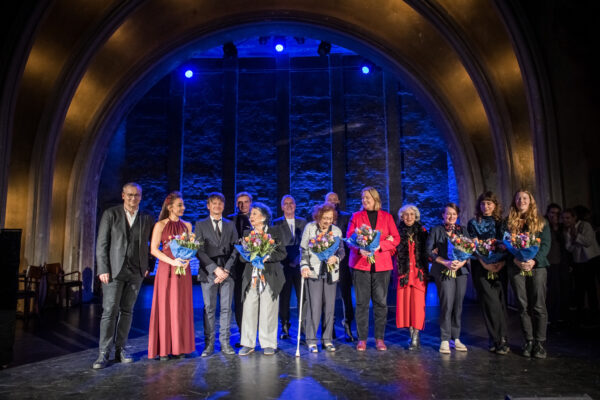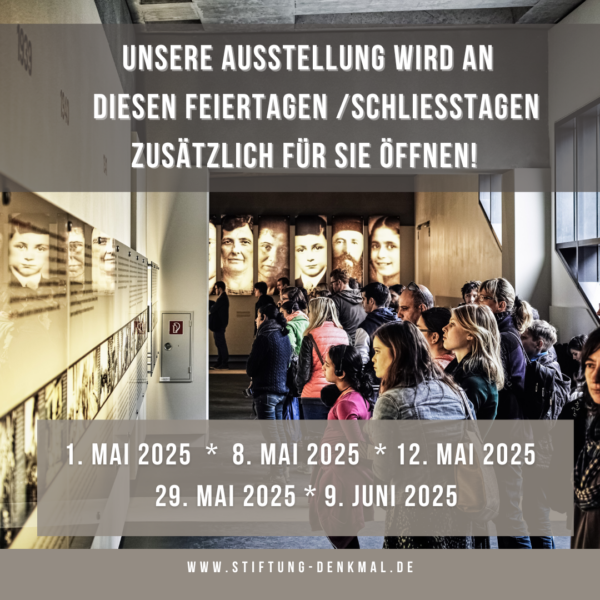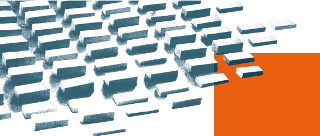From 30 June 2020, the Information Centre of the Holocaust Memorial under the Field of Stelae will be open again to visitors. From Tuesday to Sunday from 10 a.m. to 6 p.m., guests can find out about the dimension of the persecution and extermination of European Jews as well as the historical sites of crime. Distance rules and hygiene requirements are ensured, there is a nose and mouthprotection obligation.
Foundation Director Uwe Neumärker: “We are pleased to finally be able to give visitors access to the exhibition again, despite the very tight conditions. After guided tours of the Holocaust Memorial have been taking place since 25 May 2020 – with great resonance – we have decided to expand our free offer at the same time as the reopening of the exhibition. In addition to the daily guided tours at 3 p.m., there will now be more at 11 a.m. A free city walk, every Sunday at 12 o’clock, gives a variety of insights into the Berlin landscape of remembrance and leads to the monuments in the vicinity of the Holocaust Memorial, including the Sinti-and-Roma monument or the memorial site for the “euthanasia” victims.”
_______________
OUR FREE OFFERS FOR VISITORS
No registration required!
11 a.m. – FR, SA, SUN + 15 O’Clock – DAILY – FREE GUIDE
Language: german, duration: 45 min., max. 15 participants, meeting point
Information and exchange about the history and design of the Holocaust Memorial. The contents of the exhibition in the Information Centre are treated by means of photos and thus give an insight into the history of the persecution and murder of Jewish children, women and men during National Socialism in Germany and occupied Europe german. Participants will also get an overview of the Memorials that are located in the immediate vicinity.
__________________
12 UHR – SUNDAYS – CITY WALK “BERLIN AS MEMORY LANDSCAPE”
LANGUAGE: GERMAN, DAUER: 3 STD., PRICE: FREE,
Max. 15 PARTICIPANTS
Information on the historical background of the respective monuments and the design concept are explained. Depending on the interest of the participants, various cultural questions are discussed: Whose is thought and whose is not? How are the monuments located in the urban area? What is the significance of the memory of The Nazi crimes?
The Memorial to the persecuted Homosexuals, the Memorial to the murdered Sinti and Roma of Europe and the Memorial for the victims of “euthanasia” killings are freely accessible, as they have been throughout the pandemic period.






